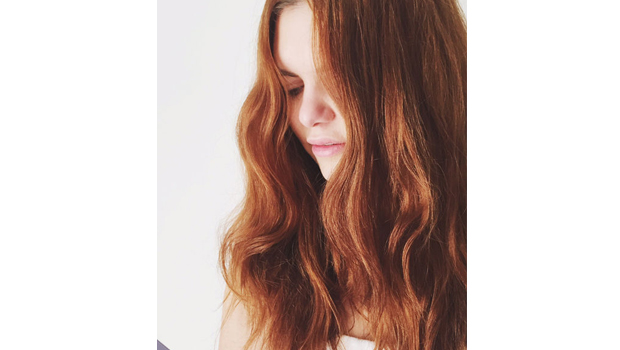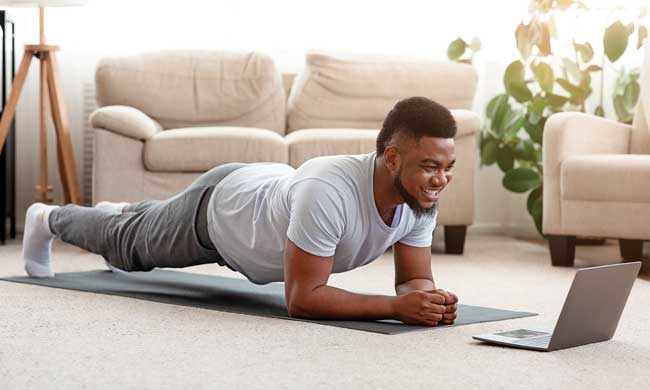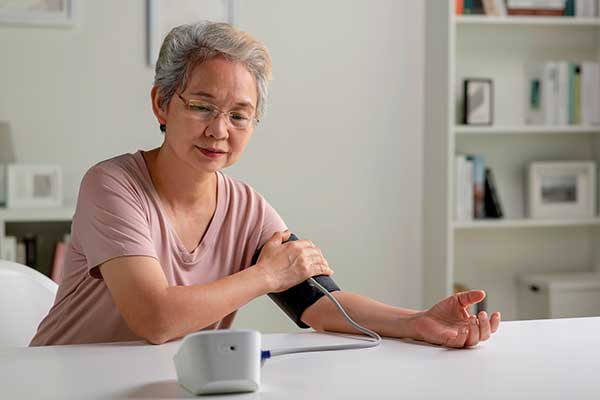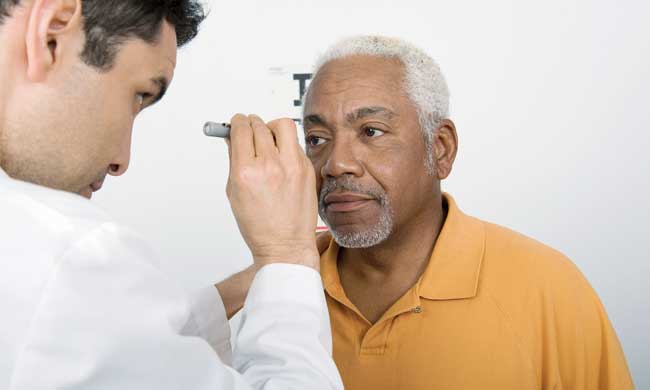HEALTHY LIVING
Air drying your hair

Believe it or not there’s a lot more to air drying hair than just letting your hair dry……. in the air. There are steps you can take to make your air dried hair look pretty epic and it’s not as hard as you might think. Follow these tips and find the air drying product for your hair type down at the bottom!
- Use a WIDE TOOTH COMB to detangle while you’re in the shower or immediately after you get out. Don’t wait too long to comb through or your curl wave pattern will break up. Find your part (if you want one) and do a quick comb through.
- Pick your favorite product from the round up below for air drying! I have different favorites for different hair needs so be sure you’re using the one best suited for your own hair. (Here we’re using the new AIR DRY FOAM for which I added a shopping link down below and more info!)
- “Scrunch” the product of your choice into your hair. Be sure to deliver the right amount to the area where your hair needs it most– for example, if you want volume, scrunch a volume-focused product into the root and work your way to the ends. If you want to focus on moisture, start at the bottom where your hair may be the driest and work your way up using a moisture-focused product.
- A long time ago I told you guys about my favorite thing for curly hair– t-shirt drying. Use an old t-shirt to squeeze excess moisture out of the hair. Using a t-shirt instead of a towel is genius because the little loops from a towel can easily cause frizz whether you realize it or not! They’re like teeny tiny little combs and sometimes hairs stick to them as you scrunch, breaking up the curl.
- Always flip your head upside down and give it a little scrunch. By doing that you can avoid that “pasted down” look that is often a result of air drying. By flipping a scrunching you’re lifting the root off your head just a little. For more volume, do this a couple times as it dries.
- Continue scrunching from the bottom up as the hair dries. Not a ton, but just a couple times here and there to encourage the wave or curl.
- If you have “puffy hair”, and it tends to get wide or super frizzy, twist your hair into a loose bun for 10-20 minutes as you air dry. Then let it to continue drying. That should help contain some of that puffiness.
- At the end, add a good HAIR SERUM of your choice! Only if you feel like you need it! If you don’t, lucky you. Sometimes just for extra polishing, I’ll take a flat iron on low heat and just finish off my ends very lightly. Sounds silly because the point of this is air drying but if you’re going somewhere and you just want it a little more refined, seal down your ends with the lightest amount of heat. You’re still skipping heat styling on 90% of the hair.
Here are my favorites for each hair type, including the one we used up top!
- R + CO CHIFFON This is more like a light leave in conditioning foam, in my opinion. I wasn’t expecting that the first time I used it. I thought it was going to be more like a regular mousse with a little hold. My hair didn’t have hold at all, it was just soft and bouncy. This is great for anyone needing additional softness when air drying. You can use this on straight, wavy or curly hair. Not going to do anything for puffy or frizzy hair, really.
- JOHN FRIEDA AIR DRY FOAM I loved this and it’s super affordable. It gives a very light hold and doesn’t feel heavy. Weightless foams are becoming very popular for air drying and this was the one we used up top. Kept the waves in and frizz out. May not be enough hold for curlier hair types though.
- LEONOR GREYL ECLAT NATUREL I’ve been using this stuff for years. I love this for over processed blondes and anyone with significant dryness. Natural oils are packed into this cream and it’s sooooooo great. It brings the most dead hair back to life. Major nourishment.
- SACHAJUAN OCEAN MIST Love this for exactly what you’d think. Beachy waves. Some ocean sprays have a lil too much grit for my liking, leaving the hair feeling like there’s a film on it. This doesn’t do that at all and it’s pretty light weight which works well on finer hair (as most ocean sprays do not).
- ORIBE CURL GLOSS Anybody air drying major curls should have this is their bathroom. It lasts a long time (which is important because it’s pretty pricey) but I love it SO much. Curly hair lacks moisture, and often lacks shine because of that. This brings back the shine in a way that just looks healthy, not wet and crunchy.
- SEBASTIAN WHIPPED CREAM This one is amazing for classic wavy hair and curly hair that needs more volume. It’s whipped and literally feels like whipped cream. It encourages waves and curls to get “bigger” but also feels moisturizing at the same time.
- LIVING PROOF CURL ENHANCING STYLING MOUSSE I like this for anyone who’s in between. So let’s say you have not-quite-wavy or not-quite curly hair. This curl enhancer will knock you into the next bracket because it actually help form stronger curl patterns.
- DR BRONNERS FAIR TRADE ORGANIC HAIR CREME Shout out to my organic, vegan- loving curly girls. This a cream formula made from organic natural ingredients. I love it for anyone who needs to “take it down a notch” with the width of their hair. If you hair gets big and wide, work some of this in from root to ends and see it settle. The weight doesn’t over-power. It just helps to calm excess volume. Also, feels like you’ve had conditioner in your hair the whole time when you go to rinse it out.
- ORIBE GEL SERUM For those of you who need MORE! If you already have wave or curl and you want it big big big, use some gel serum. I love this for wild, untamed crazy curls. It’s going to give you a MAD curly hair flip.
- SEBASTIAN POTION 9 I’ve been using this since I was a kid and I’ve used it on many hair types. It’s great for the slightest hold and for adding shine and moisture. I don’t use it every time I shampoo, just once a week or so when my fine but very thick hair feels like it needs a little extra moisture and I don’t have time to do a treatment!
Do you have any favorites for air drying?
HEALTHY LIVING
Know these 4 core factors to avoid a heart health syndrome

(Family Features) In the U.S., 1 in 3 adults is at risk for a newly recognized syndrome that comes from a combination of heart disease, kidney disease, type 2 diabetes and excess body weight. This cluster of conditions, called cardiovascular-kidney-metabolic (CKM) syndrome, is an example of how problems in one part of your body can affect other parts.
To avoid CKM syndrome, health experts suggest paying close attention to four of the American Heart Association’s Life’s Essential 8 – blood pressure, lipids, body weight and blood sugar level – which are core health factors that impact your metabolic health.
Good metabolic health means your body uses energy well and keeps these factors in a normal range. However, when numbers are off in one area, it can affect others, raising your risk for heart disease, stroke, kidney disease and diabetes.
Consider these tips from the American Heart Association to help keep your core health factors under control.

Blood Pressure
High blood pressure, also known as hypertension, happens when the force of your blood pushing against the walls of your blood vessels is too high. High blood pressure is a leading cause of heart disease, stroke and kidney disease.
Because high blood pressure doesn’t have symptoms, the only way to know you have it is to get your blood pressure checked. Healthy blood pressure is below 120/80. If your blood pressure is 130/80 or higher, talk to your doctor about checking your other core health factors.
Lifestyle changes can help reduce high blood pressure. One example is a Dietary Approaches to Stop Hypertension (DASH) eating pattern that’s low in fat and rich in fruits, vegetables, whole grains and low-fat dairy products. Losing 10 pounds and reducing alcohol consumption can also reduce blood pressure.
Cholesterol
Cholesterol is a waxy substance your liver makes then circulates in the blood where your body uses it to build cells and make vitamins and hormones. You may also get cholesterol from eating animal products. If there’s too much cholesterol circulating, your risk of type 2 diabetes, heart disease and stroke may increase.
For optimal CKM health, your LDL cholesterol should be below 100 and triglycerides below 150. Triglycerides are the most common type of fat in the body. If your triglyceride level is 135 or higher, talk to your doctor about decreasing your risk.
Losing body weight and increasing physical activity decrease triglyceride levels. In addition, DASH and Mediterranean (plant-based, high-fiber, low-fat) eating patterns support healthy LDL and triglyceride levels.
Body Weight
Healthy weight may be determined by body mass index (BMI), a number that represents your weight in relation to your height. Extra body fat can mean a higher risk for many health problems, including heart disease, stroke, high blood pressure, high cholesterol and diabetes.
CKM syndrome starts when BMI is 25 or higher and waist circumference is 88 centimeters or higher for women and 102 centimeters or higher for men. Aim for a BMI between 18.5-25.
To lose weight and keep it off, start by setting realistic goals. Understand how much and why you eat, manage portion sizes, make smart snack substitutions and be physically active.
Blood Sugar
High blood sugar can slowly damage the kidneys. In fact, diabetes is the leading cause of kidney disease, and it increases the risk of heart attack and stroke.
Blood sugar is measured in two ways: a fasting blood glucose test (short term blood sugar) and an A1C test (long term blood sugar control). A normal fasting blood glucose level is 70-99 and a normal A1C level is below 5.7%. Fasting blood glucose above 125 and A1C of 6.5% or higher means you have diabetes.
Habits that help you avoid high blood pressure, weight gain and high cholesterol also keep your blood sugar in check. These are especially important if you have a family history of diabetes.
Learn more about CKM syndrome and how to manage your risk at heart.org/CKMhealth.
Photos courtesy of Shutterstock
SOURCE:
American Heart Association
HEALTHY LIVING
What older adults need to know about vaccines for a healthy new year

(Family Features) Around the new year, many people set goals for better health. People ages 65 and older can kick off a healthy new year by getting vaccinated for flu, COVID-19 and RSV. These respiratory infections can become more dangerous as people age. Vaccines can help older people risk less severe illness and do more of what they enjoy.
Those who provide care for older adults can support their health by helping them get vaccinated now. That’s especially important because older people have a higher risk of getting very sick or even dying from flu, COVID-19 and RSV.
Vaccines help protect older adults from serious illness
As people get older, their ability to fight off infection decreases, putting them at higher risk for complications if they get a respiratory infection. They are more likely to get severely ill and need medical or hospital care from flu, COVID-19 and RSV. Those living in long-term care facilities often have health issues that make flu, COVID-19 and RSV serious risks.
The Centers for Disease Control and Prevention (CDC) urges all people ages 6 months and older to get this season’s flu and COVID-19 vaccines.
Those ages 75 and older – or ages 60 and older with certain health issues or who live in a nursing home – should get one dose of an RSV vaccine if they haven’t had it before. It’s safe to get vaccines for flu and COVID-19 (and RSV, for those who are eligible) all at the same time. Any side effects from the vaccines are usually mild and go away on their own in a few days.
Get vaccinated for a healthy new year
Vaccines are a great way for older people to start the year by protecting their health. Most deaths from flu, COVID-19 and RSV are in people ages 65 and older, and the risk grows with age. However, vaccines cut your risk of being in the hospital for flu or COVID-19 by about half and for RSV by about 70%, according to the CDC.
Those who look after older loved ones can help them avoid severe respiratory illness by helping them get vaccinated. In addition to getting vaccinated, there are other ways to help prevent serious illness. When around others indoors, use fans or open windows for better ventilation. Wearing a mask, using physical distancing and washing your hands often can also help. You can use home tests to check for COVID-19 if you have symptoms.
Visit cdc.gov/RiskLessDoMore to learn more about flu, COVID-19 and RSV vaccines. Order your free COVID-19 test kits (up to four per household) at COVIDTests.gov.
Talk with your doctor about which vaccines are right for you or an older adult you care for. Or go to vaccines.gov to get started and find a pharmacy near you.
Photo courtesy of Shutterstock
HEALTHY LIVING
What you need to know about glaucoma

(Family Features) More than 4.2 million Americans live with glaucoma, a leading cause of vision loss in the nation. Although there is no cure for glaucoma, early detection and treatment can stop this condition in its tracks.
“Glaucoma is a leading cause of vision loss and blindness in the United States, but it’s estimated that half of people with glaucoma don’t know they have it,” said Michael F. Chiang, M.D. “Glaucoma has no early symptoms, and the only way to check if you have it is to get a comprehensive dilated eye exam. There’s no cure for glaucoma, but starting treatment as early as possible can help stop vision loss.”
Regular eye exams are among the best lines of defense because symptoms may not appear until the disease has progressed significantly. Knowing more about how to spot the condition and what you can do about it may help protect your vision in the long run.
Glaucoma is actually a group of eye diseases that damage the optic nerve in the back of the eye and cause vision loss and blindness. The most common type in the United States is open-angle glaucoma. Other, less common, types include angle-closure glaucoma and congenital glaucoma.
Learn more about glaucoma from the experts at the National Eye Institute in honor of Glaucoma Awareness Month.
Causes
For some people, glaucoma is the result of another medical condition, but that’s not always the case. While experts still aren’t sure exactly what causes open-angle glaucoma, it’s believed to be related to the pressure that builds in the eye when fluid doesn’t drain fast enough. Over time, the pressure causes nerve damage, which then leads to vision loss.
Risk Factors
Glaucoma is not preventable and can affect anyone. However, some groups of people are at higher risk, including those over age 60 – particularly Hispanic or Latino individuals. African American individuals over age 40 are also at greater risk, as are people with a family history of glaucoma.
Symptoms
Early on, most people do not experience any symptoms of glaucoma. Over time, you may start to notice disruptions to your vision, such as blind spots or decreased peripheral vision (what you see from the sides of your eyes) in one or both eyes. This loss may be especially prevalent closest to your nose. Symptoms typically progress so slowly that people get used to it and don’t realize their vision is changing, which is why so many people with glaucoma don’t know they have it.
Intense eye pain, nausea, red eyes and blurry vision are all potential signs of angle-closure glaucoma, and immediate emergency treatment is necessary.
Diagnosis
The only way to properly diagnose glaucoma is through a dilated eye exam, including visual field testing to check your side vision. This routine test is painless and involves looking straight ahead while your doctor checks how well you can see objects off to the side or at the top or bottom of your field of vision.
Treatment
Without treatment, glaucoma can eventually lead to blindness. Treatment won’t undo any vision damage, but it can stop it from getting worse. Treatment may involve prescription eye drops to reduce eye pressure. Other treatment options include a laser procedure or surgery to help fluid drain. Vision rehabilitation services and devices may help if vision loss affects your everyday activities.
Find more information about glaucoma and eye health at nei.nih.gov/glaucoma.
Photo courtesy of Shutterstock
SOURCE:
National Eye Institute
-

 NEWS2 years ago
NEWS2 years ago2 hurt, 1 jailed after shooting incident north of Nocona
-

 NEWS1 year ago
NEWS1 year agoSuspect indicted, jailed in Tia Hutson murder
-

 NEWS2 years ago
NEWS2 years agoSO investigating possible murder/suicide
-

 NEWS2 years ago
NEWS2 years agoWreck takes the life of BHS teen, 16
-

 NEWS2 years ago
NEWS2 years agoMurder unsolved – 1 year later Tia Hutson’s family angry, frustrated with no arrest
-

 NEWS2 years ago
NEWS2 years agoSheriff’s office called out to infant’s death
-

 NEWS2 years ago
NEWS2 years agoBowie Police face three-hour standoff after possible domestic fight
-

 NEWS2 years ago
NEWS2 years agoDriver stopped by a man running into the street, robbed at knifepoint









